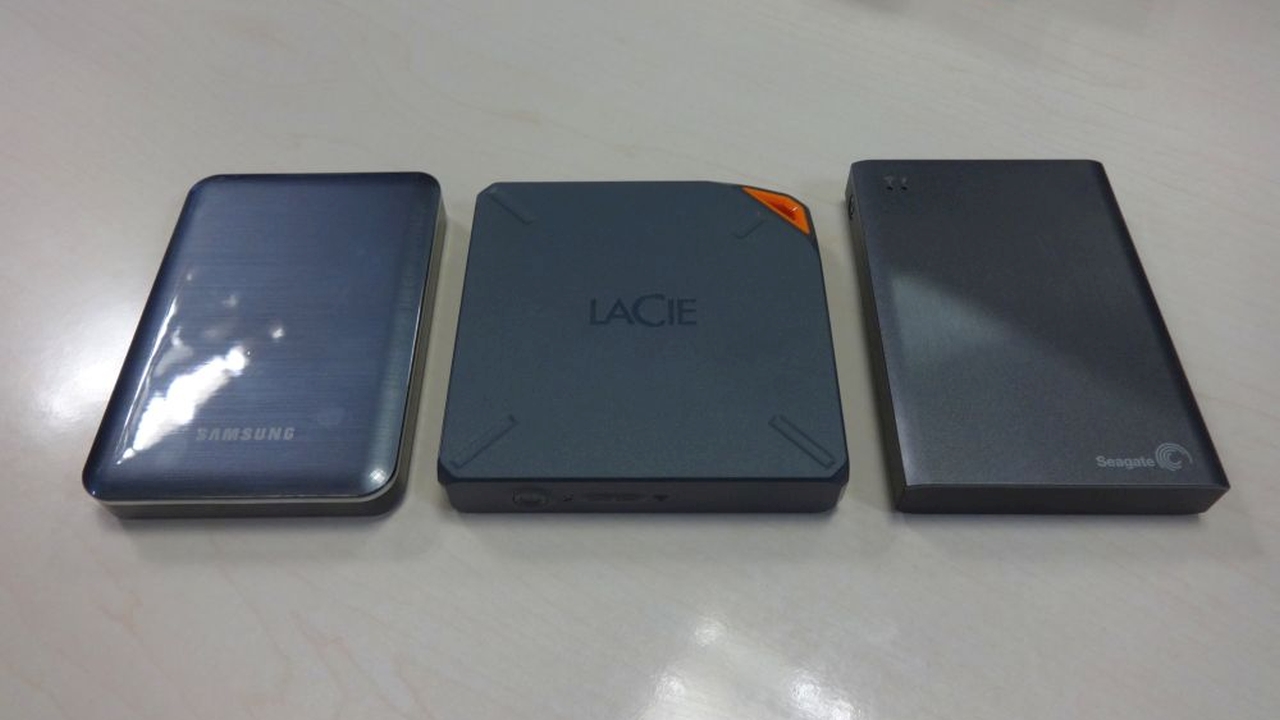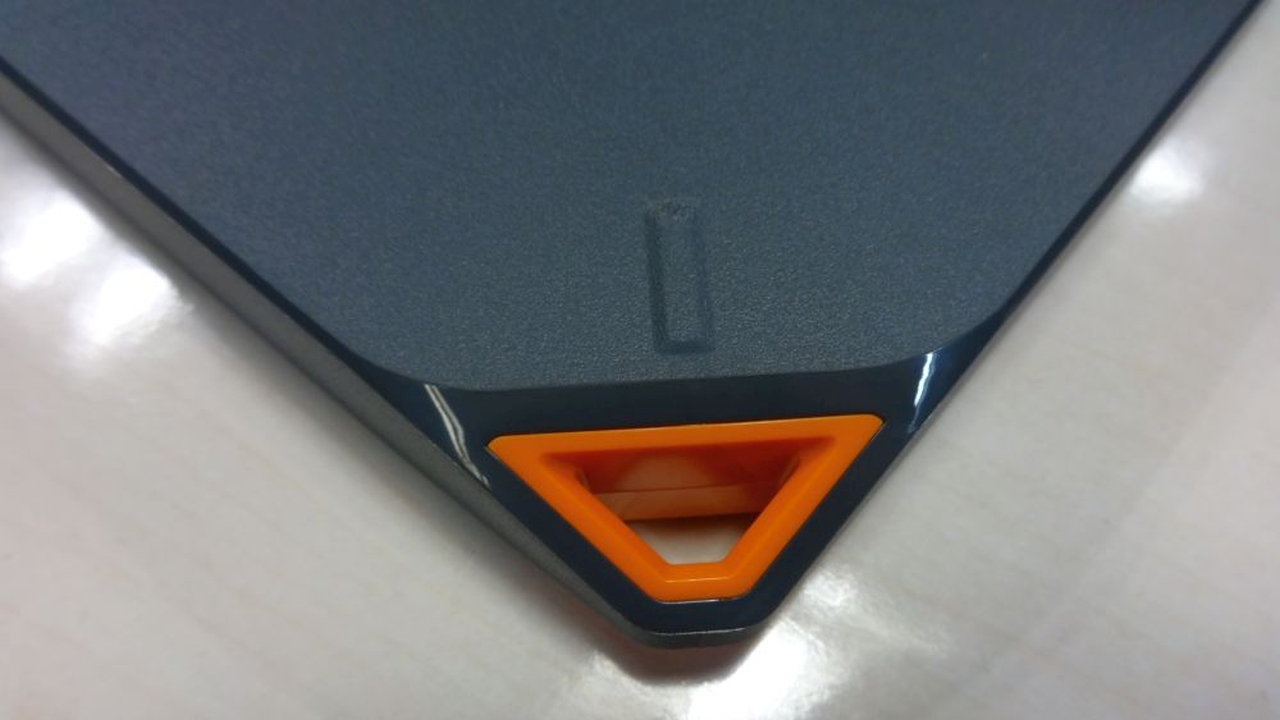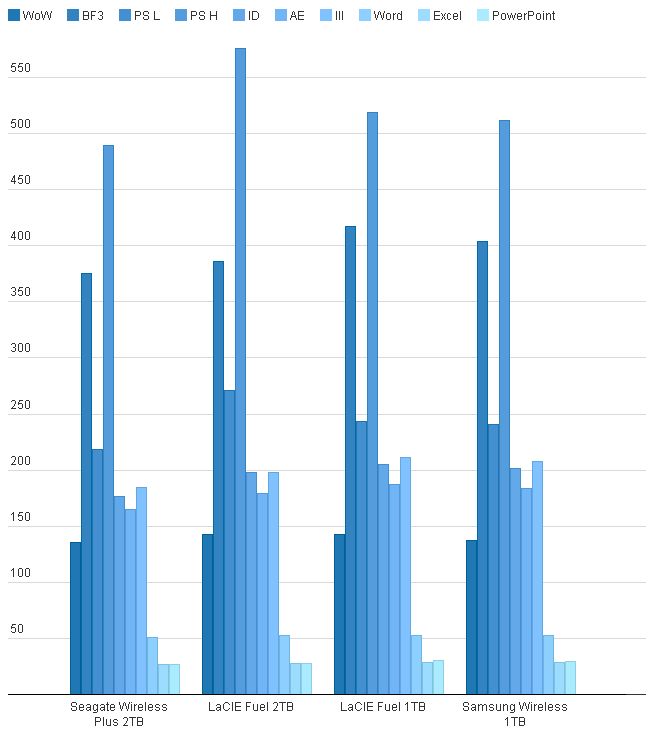TechRadar Verdict
A good little drive but things turn sour when compared to the competition, which happens to be LaCie's own parent company. Although it is cheaper than the Seagate 2TB Wireless it is slightly slower and the design is nice, but a little heavier.
Pros
- +
Unorthodox design
- +
Competitively priced
- +
Good battery life
Cons
- -
Slower than the competition
- -
bigger and heavier
Why you can trust TechRadar
Seagate-owned LaCie announced the Fuel 2TB external hard disk drive earlier this year. It is the second 2TB external wireless hard disk drive we've recently reviewed, Seagate's Wireless Plus 2TB model being the other one.
Both LaCie and Samsung Storage, two Seagate subsidiaries, sell wireless external hard disk drives that have similar characteristics to the Wireless Plus 2TB but with a different design, fewer simultaneous device connections for file access and when used as a hotspot.
The LaCie Fuel comes in two sizes: 1TB priced at £139 (US$179, AU$229) and the 2TB version priced at £169 (US$249, AU$299).
Design
The Fuel 2TB is slightly smaller than two CD jewel cases stacked on top of each other at 115mm x 115mm x 23mm (4.5 x 4.5 x 0.9 inches) and weighs 300g (9.7oz).
This being a LaCie drive, the last thing one expects is a boring design and the French company – that once collaborated with renowned designer Philippe Stark - delivers a very distinctive design.

In reality, it looks like a fuel canister with an orange handle. It feels solid with a rugged finish but I wouldn't chuck it against a wall.
As for most other external drives, it sticks to the minimum with a power button, a USB 3.0 port and 2 LEDs. Note that we also tested the 1TB version of the drive, which is identical to the 2TB model bar the storage capacity.
Features
LaCie and Seagate use the same mobile app, the Seagate Media App, which proves to be decent. Not surprisingly, they use the same Samsung M9T 9.5mm 2TB hard disk drive too.
The latter has a spinning speed of 5400RPM, three 667GB platters, 32MB cache and rated latency and power consumption of 5.6ms and 2.3W respectively.
The Fuel acts like a bog standard portable hard drive when tethered to a laptop and was rapidly recognised by my test PC.
It does come to life when operating in wireless mode, which is its main selling point, and you will need Seagate's free media app to make the most out of it.

The Seagate media app is available for most platforms including Amazon's Kindle and Windows RT but oddly enough not for Windows Phone 8.
The drive transforms into a NAS (Network Attached Storage) in wireless mode, allowing up to five devices to connect to it either via the Seagate app or natively, through other means.
You will be able to access the web thanks to a clever pass-through feature that allows the Fuel to be used as a pseudo hot-spot as well.
Performance
In theory, a higher platter density means that storage devices based on this hard disk drive should offer great sequential transfer speeds, ideal for large file transfers.
The relatively low spinning speed would hamper the random speeds, Samsung engineers having deliberately chosen to keep power consumption and noise levels in check.
In reality though, things are different. The general performance of the LaCie drive on the PC Mark 8 benchmark was inferior to that of its Seagate counterpart despite both sharing the same hard disk drive and, one would assume, the same electronics and firmware.
The gap between the two drives varied from 14% on the Adobe Indesign test to quasi-parity on the World of Warcraft one. As for the storage mark, the Fuel scored 1962, 8% less than the Seagate model.
When it comes to battery life, the mileage will vary enormously depending on the type of task performed. Expect it to be inversely proportional to the data transfer rate.
Keys: WoW = World of Warcraft, BF3 = Battlefield 3, PS L = Photoshop Light, PS H = Photoshop Heavy, ID = Indesign, AE = After effects, Ill = Illustrator, all times are in seconds, shorter is better.

LaCie says that it can last up to 10 hours in wireless mode but that is likely to be much less, especially when the drive is constantly under use (e.g. watching a movie).
It is also worth highlighting that the device will continue to broadcast while charging but only when connected to the power plug, not the USB port.
In the latter scenario, Wi-Fi is automatically disabled. One could suggest that the device is essentially a Wireless NAS with Wi-Fi access point capabilities.

Désiré has been musing and writing about technology during a career spanning four decades. He dabbled in website builders and web hosting when DHTML and frames were in vogue and started narrating about the impact of technology on society just before the start of the Y2K hysteria at the turn of the last millennium.
